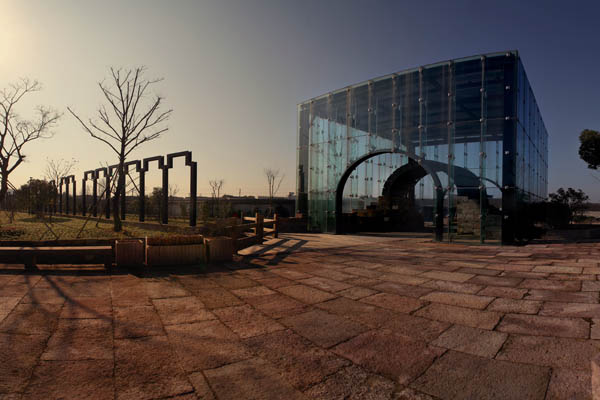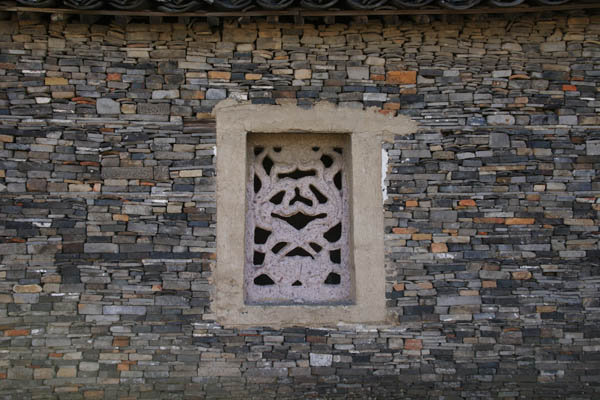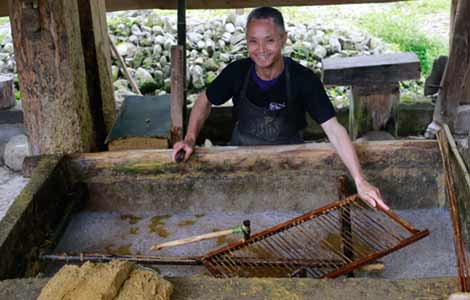Crafting a town
Updated: 2013-08-08 02:16
By Sun Yuanqing (China Daily)
|
|||||||||||
Rich history
The town first came to public attention in the midst of a nationwide interest in ancient town revival more than 10 years ago. Back then, the prospects for the area were far from promising.
Planned and built in the Tang dynasty (AD 618-907), Cicheng took after the then capital city of Chang'an. It was home to many influential scholars, whose legacy to the town is numerous examples of ancestral architecture. Thirty-three of these buildings have national level or district level status.
The town was largely ignored when Ningbo started to develop its marine economy, moving the city center toward the coast.
 |
|
The east gate and the "city walls" in the ancient town have a modern touch.Photos Provided to China Daily |
During the Japanese occupancy in the late 1930s, the east gate and the city walls were torn down to allow the residents to evacuate quickly during air raids.
After the founding of the People's Republic of China in 1949, modern buildings were constructed among the ancient courtyards. The waterways that ran along the stone-paved streets were filled to double the road capacity.
In the early 2000s, when other ancient towns like Lijiang and Zhouzhuang started grabbing national attention for their picturesque landscape, all Cicheng had was run-down houses, city walls that no longer existed and a history that lingered only in people's memories.
 |
|
Scrap-walled houses are still common in Cicheng.Photos Provided to China Daily |
However, Yan considered these as gateways to restore Cicheng's glorious past.
"We didn't have much to start with," Yan says. "So we had to be extra careful with our choices."
Evoking the past
Spontaneity is avoided in restoration, with the rule of "restoring the old as the old" strictly adhered to. The construction teams are all from Ningbo to ensure that the crafts remain local.
As the restoration went on, more questions arose: Is it necessary to restore the old east gate, the city walls and the waterway? Unlike Lijiang, a town that has relocated its locals to make room for tourists, Cicheng is still home to about 17,000 local residents.
"They might add appeal to Cicheng's landscape, but how would it affect people's lives?" says Yan. "The locals and their lives come before the restoration."
The problem was solved with a modern touch. The original frame of the east gate is shaped out by glass while the inner structure is made of stone. The "city walls" are sketched out by black trusses, evoking the memory of the city walls without hindering modern transportation.
A small stretch of the waterway was restored near the east gate to give people a glimpse of the past. The rest of the roads were paved with white stones and black pitch to indicate the old waterway and stone road respectively.
One of Cicheng's symbolic architectural heritages is "scraps walls". In the past, poor people would collect leftover materials from the wealthy to build their homes. It is very difficult to build even walls with these uneven materials. This building method was applied by Wang Shu in his design for the Ningbo Museum, which won the 2012 Pritzker Architecture Prize along with his other works.
Scrap-walled houses are still commonly seen in Cicheng today as they have been carefully preserved.
Today's Top News
Dairy firms hit with fines
Sino-US trade gap narrows
Exports, spending 'to ebb'
A stage set for big innovation
China helps out energy-starved Pakistan
Paying global tuition made easier
AT&T ready for disaster recovery
China helps out energy-starved Pakistan
Hot Topics
Lunar probe , China growth forecasts, Emission rules get tougher, China seen through 'colored lens', International board,
Editor's Picks

|

|

|

|

|

|





